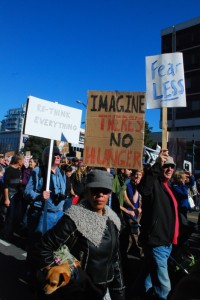When Egyptians and Libyans began protesting to topple their corrupt governments, the world had yet to see what the singular focus of hundreds of thousands of people could accomplish. It was something new that the world hadn’t seen before: a nonviolent revolution.
The growing Occupy movement currently seeks to use this new power of nonviolent revolution to try and fix the western world. Currently, around 80 countries worldwide have Occupy protests underway.
But, unlike the revolutions in Libya and Egypt this past year, these protests lack the unity and focus they’re trying so desperately to emulate.

Citizens in Egypt and Libya endured decades of mistreatment from corrupt regimes before they took to the streets to reclaim their countries, the latter of which ended up becoming a violent revolution that ultimately led to the death of their leader. These revolutions were unified under a singular purpose.
In Victoria, the Occupy movement was fractured before it began. Ask a dozen different people why they’re there, and there will be a number of different responses – not all of which necessarily make sense together.
And that’s not to say that the issues aren’t worth protesting about. Smart Meters, student debt, and government misspending are all issues that need to be addressed. But these protesters are diluting their messages by lumping it all together.
A thousand protesters all camped out on the lawn of the legislature to protest a single issue sends a message. A thousand protesters all camped out on the lawn of the legislature for a dozen different reasons is laughable – although their hearts are in the right place, their lack of organization and unity only makes them easier to ignore.
Rather than have thousands of people each trying to shout their issue the loudest, instead there are a thousand protesters shouting the same message in unison.
Individually, messages can be lost, can get muffled, or can cancel each other out. Collectively, they amplify, gaining a power and momentum that cannot be ignored.
